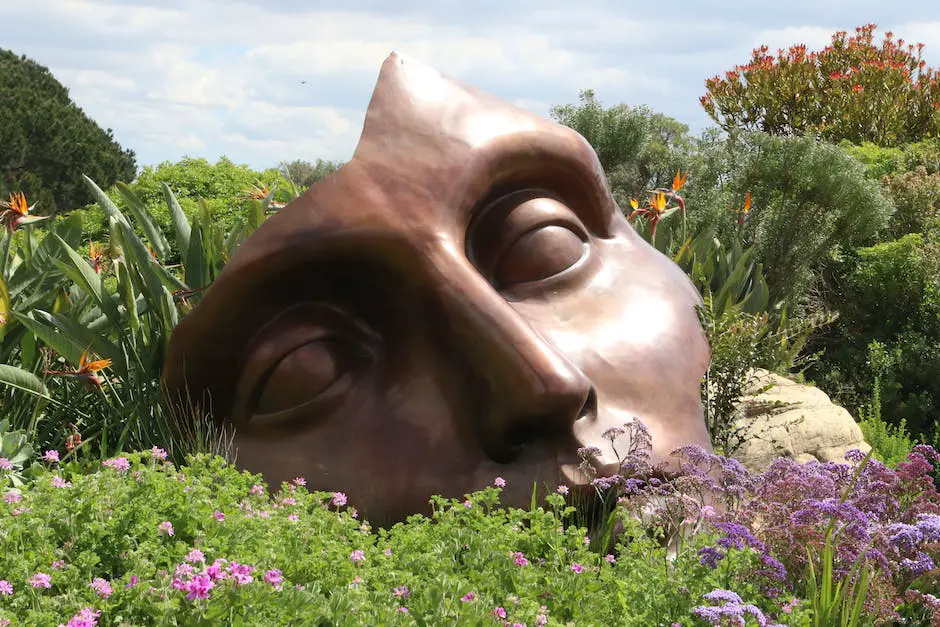Why Does My Head Itch When I Wear A Hat

Have you ever worn a hat and experienced an itching sensation on your scalp? If so, you’re not alone. Many people have had the same experience and it can be an unpleasant one. Itching in the scalp can be caused by a variety of factors, including wearing hats, and understanding why this happens can help you find relief. In this article, we’ll explore why your head itches when you wear a hat and how to prevent this from happening.The most common cause of head itch when wearing a hat is contact dermatitis. This occurs when the hat fabric, such as wool or synthetic materials, irritates the skin and causes an allergic reaction. Other causes include scalp psoriasis, lice infestations, and fungal infections like ringworm. It is important to be aware of what type of fabric the hat is made from in order to avoid potential allergic reactions.It is common to feel itchy under a hat due to the sweat and fabric of the hat rubbing against your skin. This can be especially true if you are wearing a hat for an extended period of time or in hot weather. The material of the hat can also play a role in how itchy you feel, as some materials are more likely to cause irritation than others.
To reduce itchiness, it is important to choose a hat that fits well and is made from breathable fabrics. Wearing a hat that is too tight may cause discomfort and itching as it restricts air circulation. It is also important to clean your hats regularly, especially if they become sweaty or damp. If you continue to experience itching, try using a scalp-soothing product such as an anti-itch shampoo or lotion before putting on your hat.
In some cases, itchiness under a hat may be caused by an allergic reaction or sensitivity to the material of the hat. If this is the case, you should avoid wearing hats made from those materials and opt for those made from natural fibers such as cotton or linen instead. If possible, it is also recommended that you try on hats before purchasing them so that you can determine how they fit and feel on your head.
Overall, it is common to feel itchy under a hat due to sweat and fabric rubbing against your skin. To reduce this discomfort, choose hats that fit well and are made from breathable fabrics such as cotton or linen, clean them regularly, and use scalp-soothing products if necessary.
What Are Possible Causes of Head Itch When Wearing a Hat?
One of the most common causes of head itch when wearing a hat is due to poor ventilation. When a hat is worn, it prevents air from circulating around the scalp and hair follicles, resulting in an accumulation of sweat and heat. This can result in an itchy scalp as the sweat and heat cause irritation. Additionally, certain materials used to make hats, such as wool or synthetic fibers, can also cause itching as they can be abrasive against the scalp or cause an allergic reaction.
Another possible cause of head itch when wearing a hat is due to bacteria or fungus. These organisms can accumulate on the scalp if the hat is not washed regularly, leading to irritation and itching. Sweat and sebum produced from the scalp can also provide an ideal environment for bacteria or fungus to thrive, further exacerbating head itch.
Finally, wearing hats for long periods of time can also lead to head itch as sweat accumulates. Sweat mixed with dead skin cells can block pores on the scalp leading to bacterial or fungal growth which in turn causes itching. Additionally, some hats may contain dyes or chemicals that irritate the skin and cause itching.
Is Wearing a Hat Usually Problematic for Sensitive Scalps?
For many people, wearing a hat can be an enjoyable fashion accessory or a practical solution to keeping warm in colder weather. But for those who have sensitive scalps, hats can be problematic. Sensitive scalps can easily become irritated from the tightness of hats, or from the sweat and bacteria that accumulate on the fabric. This type of irritation can lead to redness, itching, and even scalp infections.
To minimize the risk of irritation, it is important to take some precautions when wearing a hat. Look for hats made from soft fabrics such as cotton or linen and avoid synthetic materials like polyester. Make sure that the fit is not too tight; if it feels uncomfortable when you try it on in the store, it will likely be too tight when worn for long periods of time. Additionally, hats should be washed regularly to remove any sweat or bacteria that may have accumulated on them over time.
Finally, if you do experience any irritation after wearing a hat, take it off as soon as possible and give your scalp some time to rest and recover before putting it back on again. It may also help to apply an anti-itch cream or lotion specifically designed for sensitive scalps. By taking these precautions, you can reduce the chances of experiencing any unpleasant side effects from wearing a hat.
In conclusion, wearing a hat can be problematic for those with sensitive scalps due to potential irritation caused by tightness and bacteria build-up on the fabric. To avoid this issue, look for hats made from soft materials with comfortable fits and make sure to wash them regularly. If irritation does occur after wearing a hat, take it off immediately and apply an appropriate product designed specifically for sensitive scalps.
How Can I Keep My Head From Itching When Wearing a Hat?
Wearing a hat can be uncomfortable if your head starts to itch. This is often due to the material that the hat is made from, such as wool or synthetic material. To keep your head from itching when wearing a hat, there are several steps you can take.
First, make sure that you’re wearing a hat made of natural materials such as cotton or linen. Natural fibers are more breathable than synthetic ones and will help keep your scalp from becoming too hot and sweaty. Additionally, choose hats with soft linings such as silk or satin which can help reduce itching by helping to wick away moisture.
Another thing you can do is to choose hats with adjustable straps so that you can get the perfect fit for your head. A snug fit helps keep the hat in place and also prevents any unnecessary rubbing against your scalp which could cause irritation and itching.
Finally, try to wear hats made with lightweight materials so that they don’t feel too heavy on your head and cause discomfort. Also, avoid wearing hats for extended periods of time as this can contribute to sweating and itching as well. If possible, take breaks from wearing your hat throughout the day so that your scalp can breathe and cool down.
By following these tips, you should be able to reduce itching when wearing a hat and keep your head comfortable all day long!

Home Remedies for Relieving Head Itch From Wearing a Hat
It is common to experience itching on the head when wearing a hat. This can be caused by various factors, such as the material of the hat, sweat, and dirt buildup. Fortunately, there are numerous home remedies that can help to relieve head itch from wearing a hat.
One of the most popular home remedies is using a mixture of vinegar and water to create an itchy scalp relief solution. To make this solution, mix equal parts of vinegar and water in a bowl. Then, massage the solution into the scalp and leave it on for 15 minutes before rinsing off with cool water.
Another effective remedy for relieving head itch from wearing a hat is to apply an oatmeal or baking soda paste directly to the skin. To make this paste, mix one tablespoon of oatmeal or baking soda with a few drops of water until it forms a thick paste-like consistency. Once prepared, apply the paste onto the scalp and leave it on for 10-15 minutes before rinsing off with cool water.
Aloe vera gel can also be used as an effective remedy for relieving head itch from wearing a hat. Simply apply some aloe vera gel directly onto the affected area and massage it in gently using your fingertips. Leave it on for 10-15 minutes before rinsing off with cool water.
Coconut oil is another great remedy that can help to soothe an itchy scalp caused by wearing hats. Simply massage some coconut oil into your scalp and leave it on overnight while you sleep. In the morning, rinse off with warm water followed by cold water to seal in moisture.
Lastly, tea tree oil is known for its antiseptic properties which makes it an ideal remedy for relieving head itch from wearing hats. To use tea tree oil as a home remedy, mix five drops of tea tree oil with two tablespoons of coconut oil or olive oil and massage into your scalp gently using your fingertips. Leave it on overnight before rinsing off in the morning with warm water followed by cold water to seal in moisture.
Does Hair Type Affect the Likelihood of Experiencing Head Itch When Wearing a Hat?
Wearing a hat can be an uncomfortable experience for many people. One reason for this is head itch, which can be caused by sweating, friction, and the material of the hat itself. The type of hair someone has can also affect the likelihood of experiencing head itch when wearing a hat. Coarser hair tends to be more prone to friction and therefore more likely to cause itching. Curly hair is also more prone to knotting and tangling, which can increase the amount of friction against the scalp and make it more likely for itching to occur. On the other hand, finer hair is less likely to cause itching because it is less prone to tangling and knotting.
The type of material used in the hat also affects how much itching someone may experience while wearing it. Hats made from fabrics such as cotton or linen tend to be less abrasive than hats made from synthetic materials such as polyester or acrylic. Additionally, hats that are lined with a soft fabric such as silk or satin are less likely to cause itching than those that are not lined. Sweat can also contribute to head itch when wearing a hat, so hats made from breathable materials such as mesh or cotton are better choices for those who tend to sweat a lot.
Ultimately, there are many factors that affect how much itching someone may experience when wearing a hat. Hair type is just one factor that needs to be considered when deciding what kind of hat will provide the most comfortable fit. Other factors include material type, lining material, and sweat resistance level. Taking all these factors into account should help ensure that you find a hat that will provide comfort without causing any discomfort due to head itch.
Should I Avoid Certain Fabrics If I Suffer from Head Itch When Wearing a Hat?
If you suffer from head itch when wearing a hat, it is recommended to avoid certain fabrics. Certain fabrics such as wool, synthetic fibers, and nylon can trap heat and moisture against the skin, which can lead to itchiness. Cotton is generally the best fabric for hats because it is lightweight and breathable which will reduce sweat and help keep your scalp cool. Additionally, natural fibers like linen are also great for hats as they are lightweight and breathable, allowing air to move around the scalp.
When looking for a hat, look for styles that have adequate ventilation like straw hats with an open weave or mesh panels. Also look for hats with a wide brim that will provide more coverage and shade your scalp from direct sunlight. A snug fit is important but make sure it’s not too tight as this can also cause irritation.
If you still experience itching after trying different fabrics and styles of hats, it may be an indication of a more serious issue such as dermatitis or psoriasis. In this case, it’s best to consult with your doctor to discuss possible treatments or remedies.
Overall, choosing the right fabric and style of hat can help reduce head itch when wearing a hat. Opting for lightweight material such as cotton or linen should help keep your scalp cool while providing adequate ventilation to prevent sweating.

Conclusion
Itchy head when wearing a hat is a common problem and can be caused by a variety of factors. The first step to finding relief is to identify the underlying cause. When the cause is pinpointed, you can take steps to alleviate the itchiness. In many cases, wearing hats of different materials or regularly washing hats may provide relief. If this doesn’t work, then trying other treatments such as topical medications or changing your hairstyle may also help. It’s important to remember that itchy scalp from hats is relatively common, and you should not be embarrassed by it.
In conclusion, there are many potential causes of an itchy scalp when wearing a hat, but fortunately, there are also several treatments that can provide relief. It’s best to try simple remedies first before seeking medical advice if necessary. By taking the right steps and working with your doctor if needed, you can keep your head itch-free when wearing hats.
